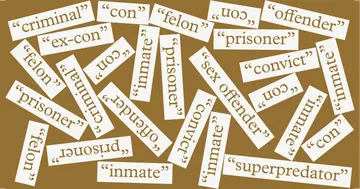This article was published in collaboration with Vice.
Seven years ago, I was shot. Twice.
In 1988, my family moved to Highland Park in Detroit. I grew up on Geneva Street, one of the most vibrant spots in the neighborhood for reasons both good and bad. There were the friendly games of bike-tag — but also constant drug-dealing and shootings. I lived in a single-parent home along with my four brothers. I was the youngest, and watched as the people around me succumbed to violence, prison, or both.
When I was 10 years old, I remember sitting on my front porch with my brother and several friends. We heard a car screech, then gunfire. My best friend, Reubin, also 10, had been shot in the chest, the random victim of a drive-by shooting.
He died instantly.
My father was shot in the 90s, also in the chest, during an argument with a friend over money.
My second oldest brother was shot in the back while trying to run away from someone who was trying to rob his apartment.
In the early 2000s, my first cousin was shot in the back during an attempted robbery and is now paralyzed from the waist down. Another cousin has been shot and stabbed several different times.
So often, young black men are seen as dangerous. The truth is, we’re the ones most likely to be harmed. I wanted my life to be different.
By the summer of 2009, I had graduated from Elms College in Massachusetts with an honors degree in business management and a contract to play professional basketball in Europe. People said I was like a wizard on the court; my nickname was “Oz.”
But everything changed the night of Aug. 24, 2009. I pulled up to a convenience store on Albany Avenue in Hartford, Connecticut, to grab some lemonade. But as I walked in, I noticed a guy staring at me, and an eerie feeling crept over my body. When I left the store, I walked to my car and put the juice on the backseat. I turned to close the car door, and saw two men I didn’t know walking toward me. One of them had two guns, one in each hand.
Several competing thoughts raced through my head — to jump in the car, put the key in the ignition, and drive off; to let them rob me of my car or my belongings; or to do whatever I could to fight for my life. As they got closer, I started counting the steps. One, two, three. On the fourth, I lunged.
After a brief scuffle, I tried to run back into the store. Eight shots rang out, two of which hit me in the back.
I remember lying on the ground. I tried to stand up but couldn’t feel my legs.
I didn’t know if the two men were still nearby, so I tried dragging myself from the parking lot to the store entrance. I looked up at the clerk and yelled, “I’m shot. I need help.”
When the ambulance came, I kept saying to the paramedics, “I don’t want to die.” I said those words to myself, too.
At the ER, doctors told me that I had two collapsed lungs, extensive internal bleeding, temporary paralysis, and a dislocated shoulder. It took me days to wake up, and I spent weeks in the hospital. I was confused, angry, scared — and in so much pain.
When the doctors and nurses came to change my bandages, I held onto the bed rail, crying. They were unable to remove the bullets for several years because of how close they were to my spine. My body would never be the same again.
There were the mental wounds, too. I was afraid to return to my own neighborhood. I lived just a few blocks from where it happened, and I was worried, perhaps irrationally, that the men would come back to kill me.
This fear curdled into anger, and I wanted vengeance.
I asked a family member to get me a gun. Within a few hours, he came to my house and placed a black 9 mm next to my medicine bag.
I had never even held a gun before that. Now I took one with me everywhere I went — to relatives’ houses and doctor’s appointments.
Police came to see me two or three times while I was recovering, and seven months after I was shot, they captured the man who did it. Detectives arrested him at a house in my neighborhood. He was 18 or 19 years old, younger than I was at the time.
The day of his trial, I was prepared to testify, to identify him in court, and to tell him about the pain he’d caused. I was led to the DA’s office, where I heard that he had repeatedly declined multiple plea deals and was facing 40 years in prison. My brother was serving a life sentence, and I knew all too well the devastation that long-term prison sentences could have on a family.
That’s when something clicked: I didn’t want to put another human being through that.
Working with the prosecutor, I settled on another deal. My attacker accepted, pleaded guilty, and received a sentence of six to ten years.
For the first time in a long time, I didn’t feel so angry. I still don’t know if he was aware that I helped him get a lesser sentence.
Our basketball coach at Elms had a saying. After doing a ton of sprints and runs, when we were feeling the pain and wanted to give up, he would say, You’re not as tired as you think you are.
It’s the most important lesson I’ve ever learned.
Aswad Thomas received a master’s degree in social work and now works with the Alliance for Safety and Justice, organizing a national network of crime survivors who advocate for an improved justice system.
